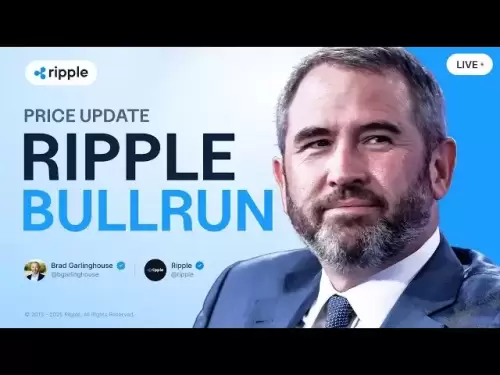 |
|
 |
|
 |
|
 |
|
 |
|
 |
|
 |
|
 |
|
 |
|
 |
|
 |
|
 |
|
 |
|
 |
|
 |
|
Cryptocurrency News Articles
Ripple's fast and affordable payment system is gaining traction around the world.
May 24, 2025 at 08:28 pm
A new report highlights that Ripple's XRP and blockchain payment tech could play a key role in helping the G20 meet its cross-border payment goals

The U.S. Faster Payments Council (FPC) is urging domestic providers to adopt ISO 20022, embrace interoperability, and leverage blockchain technology like Distributed Ledger Technology (DLT) to meet the G20's goals for cross-border payments by 2030, according to a 2025 report from the council.
The G20 is aiming to reduce cross-border payment costs to 1% or less and ensure that 75% of payments are completed within an hour by 2027 and 2030. To achieve these goals, the FPC highlighted the need for focusing on financial inclusion and promoting inter-industry collaborations.
In the report, the FPC specifically mentioned Ripple and Stellar as key players who could improve the global cross-border payment landscape. Ripple, in particular, is reshaping global payments with its RippleNet and XRP-powered technology.
As Ripple's solutions comply with global standards like ISO 20022 and utilize smart blockchain tools, they are well-positioned to support the G20 in achieving its payment goals.
As more firms adopt Ripple's solutions, XRP could see significant gains due to the increasing demand. With growing adoption, experts predict XRP will hit $10-$20 easily in 2025. Reaching $100 could happen, but it is more likely in early 2026. And eventually, as the technology and network expand further, XRP could reach $1,000.
The report also highlighted the importance of domestic payment providers in playing a big role in making global payments faster, cheaper, and more reliable.
Global demand is rising for faster, cheaper, and more transparent cross-border payments, which are already a $34 trillion market.
The G20 is pushing hard to improve this space, seeing it as key to boosting trade, economic growth, and development. They plan to make payments quicker, more affordable, and easier to access.
They have set clear targets for retail, wholesale, and remittance payments, and aim for major progress by 2027 and 2030.
Disclaimer:info@kdj.com
The information provided is not trading advice. kdj.com does not assume any responsibility for any investments made based on the information provided in this article. Cryptocurrencies are highly volatile and it is highly recommended that you invest with caution after thorough research!
If you believe that the content used on this website infringes your copyright, please contact us immediately (info@kdj.com) and we will delete it promptly.
-

-

-

- Unilabs (UNIL) Steals the Show From Ripple (XRP) With Its Fast-Growing DeFi Asset Management and Investment Platform
- May 25, 2025 at 03:15 am
- With Ripple holders expecting a strong XRP price hike soon, Unilabs (UNIL) is stealing the spotlight with its fast-growing DeFi asset management and investment platform.
-

-

-

-

-

-


























































